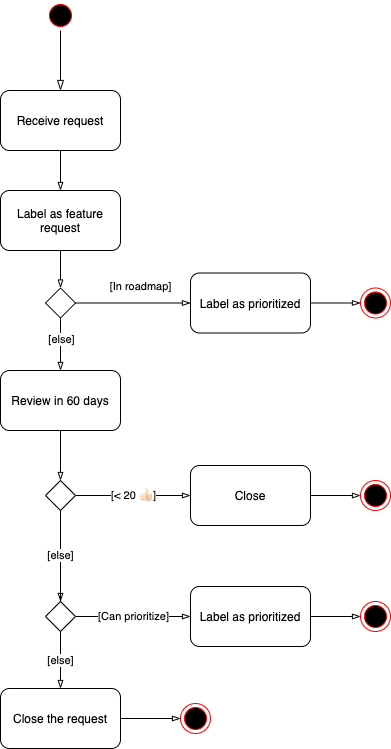Reword a few things in the explanation around our `Feature request process` to make the process a little clearer. PR Close #41977
2.5 KiB
Automatic conversation locking
Closed issues and pull requests are locked automatically after 30 days of inactivity.
I want to comment on a locked conversation, what should I do?
When an issue has been closed and inactive for over 30 days, the original context is likely outdated. If you encounter a similar or related issue in the current version, please open a new issue and provide up-to-date reproduction instructions.
Why lock conversations?
Automatically locking closed, inactive issues guides people towards filing new issues with updated context rather than commenting on a "resolved" issue that contains out-of-date or unrelated information. As an example, someone may comment "I'm still having this issue", but without providing any of the additional information the team needs to investigate.
Feature request process
To manage the requests we receive at scale, we introduced automation in our feature request management process. After we triage an issue and we identify it as a feature request, it goes through several steps.
Manual review
First, we manually review the issue to see if it aligns with any of the existing roadmap efforts. If it does, we prioritize it accordingly. Alternatively, we keep it open and our feature request bot initiates a voting process.
Voting phase
To include the community in the feature request process, we open voting for 60 days. Anyone can cast a vote for the request with a thumbs-up (👍) reaction. When a feature request reaches 20 or more upvotes, we formally consider the feature request. Alternatively, the bot closes the request.
Consideration phase
If the feature request receives 20 or more votes, we verify the Angular team can afford to maintain the feature and whether it aligns with the long-term vision of Angular. If the answers to both of these questions are yes, we prioritize the request, alternatively we close it with an explanation of our decision.
Diagram
What if I want to implement the feature to help the Angular team?
Often implementing the feature as an separate package is a better option. Building an external package rather than including the functionality in Angular helps with:
- Keeping the framework's runtime smaller and simpler
- Makes the learning journey of developers getting started with Angular smoother
- Reduces maintainers burden and the complexity of the source code
